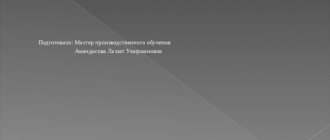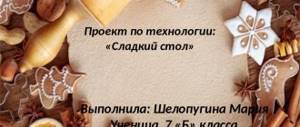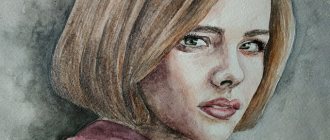How to make paper animals for the zoo with your children? Step-by-step master classes
Now let's get down to the most important part of creating a zoo, namely the question of how to make paper animals for a zoo using the origami technique. The master classes below will help you easily populate the territory of the zoo.
How to make a crane out of paper? Step-by-step master class
Take a square sheet; the dimensions of the future figurine depend on its size.
1.Fold it twice diagonally.
2.Then make bends in the shape of a plus.
3.Fold the workpiece along the folds, as in the photo.
4.Fold the upper side edges to the bend in the middle.
5. Wrap the top of them with a triangle, as in the photo.
6.Now straighten the top and flatten the bent parts lengthwise.
7.Do the same with the reverse side. It should look like this.
8. Turn the workpiece sideways and fold the edges again towards the central fold.
9.Fold the top corner and straighten it out. Perform the same actions on the reverse side.
10.Fold the corners for the neck and tail as in the photo.
11. Turn it sideways and push through all the bends.
12.Stretch out the tail and bend the beak.
13.Fold the wings.
14. The crane is ready.
You can populate it in a paper zoo.
Video master class on how to make an elephant from a square sheet
How to make a fox out of paper? Step-by-step master class
To make a fox you need to prepare an orange square sheet. The master class is shown using an example from a 15X15 sheet.
1.Fold the sheet twice diagonally to crease the folds.
2.Fold into a triangle, fold in the bottom edges as shown in the photo.
3. Turn the resulting square over and fold it in half.
4.Unfold the workpiece as in the photo.
5. Bend at an angle along the dotted line.
6.In one direction and the other.
7.Unfold the folded part as in the photo.
8. Bend the protruding triangle downwards, like a muzzle, and make ears along the edges.
9. You should get a fox like this.
All that remains is for her to spread her leaf-like legs for stability and make eyes.
Video master class on how to make a bunny from a square sheet
How to make a cow out of paper? Step-by-step master class
To make a cow, you need a 15X15 square sheet.
1.Fold it in half twice in a + shape and twice diagonally. You will get such a sheet to work with.
2.Fold as in the photo.
3.To get such a blank.
4.Fold the top corner.
5.Unfold the resulting workpiece and carry out the actions as indicated in the photographs.
6. It should turn out like this.
7.Fold the workpiece in half. The result is the body of a cow.
Now we need to make the head.
1.To do this, take a piece of paper identical to the first one and fold it in half. Then fold the resulting halves to the center fold line.
2. Bend the workpiece again with the connection inward. Afterwards, bend the edge of the resulting rectangle as shown in the photo.
3.Flatten each part of the folded edge (see photo).
4. It should look like this.
5.Make a nose by bending the tip inward. Ears, folding the corners, as in the photo.
6.Bend your neck.
7.Fold the edges inward so that the cow’s neck is not too long.
Glue the body to the neck.
Color the resulting cow and you can place it in a paper zoo.
Video master class on how to make a mouse from a square sheet
Layout for kindergarten “World of Pets”
Vera Gavrilova
Layout for kindergarten “World of Pets”
Description of the material : the model is made for young children for the purpose of cognitive development and development of play activities.
The mockup is made from an empty shoe box. The fence is made of ice cream sticks painted with blue gouache, the grass cover is made of artificial lawn grass measuring 25x25 cm, the sand cover is made of a sheet of cork backing 1.8 mm thick.
Inside there are:
1) a house made from a square glass box, covered with newspaper tubes, the roof is made of thick cardboard, covered with ice cream sticks. Next to the house there is a bench made of plasticine and ice cream sticks;
2) a pen for cows and horses, made of ice cream sticks, the feeder is made of brown plasticine and varnished;
3) a small pond made from a box of colored pencils covered with plasticine and small colored stones from an aquarium. There is a wooden bridge (made from popsicle sticks) across the pond;
4) a well made of a matchbox and Chinese sticks, covered with plasticine and varnish;
5) fruit trees - apple and pear trees.
To play around, you needed figurines of domestic animals. Using a model is a great opportunity to introduce children to the inhabitants of a real farm. In a playful way, children will study animals, what sounds they make, what they eat and where they live.
Goal : developing ideas about domestic animals.
Objectives : to consolidate children’s knowledge about domestic animals and their cubs, the ability to distinguish them and name them correctly; develop interest in the way of life of animals; cultivate a kind attitude towards them.
Integration of educational areas : “Socialization”, “Communication”, “Cognition”, “Reading fiction”
Can be used in individual work with children, in direct educational activities, and in independent play activities.
Ways to use the layout in GCD and individual work with children: conversation using animal figures for viewing, reading poems and stories about animals according to the program, using riddles, didactic games “Who lives where?”, “Who eats what?”, “Where is whose?” mom?”, “Who’s the odd one out here?”, “Guess who’s talking like that,” “Who’s missing?”
Independent play activity : Children enjoy using the layout in play. The animal figures are easy to move. You can play for one child, or team up with one of the children who shares similar interests. Children enjoy caring for animals: feeding them, walking them.
In the game, the concept and plot develop, children communicate with each other, distribute roles. Role-playing games with the “World of Pets” layout will reveal creative abilities and develop children’s imagination.








